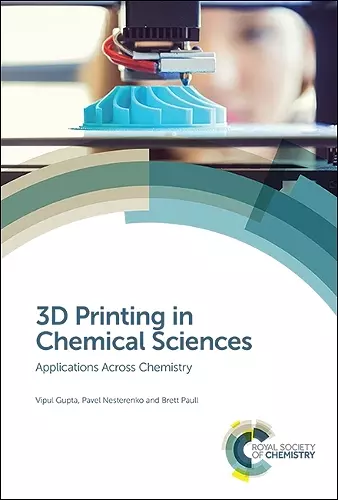3D Printing in Chemical Sciences
Applications Across Chemistry
Pavel Nesterenko author Brett Paull author Vipul Gupta author
Format:Hardback
Publisher:Royal Society of Chemistry
Published:1st Apr '19
Should be back in stock very soon

3D printing has rapidly established itself as an essential enabling technology within research and industrial chemistry laboratories. Since the early 2000s, when the first research papers applying this technique began to emerge, the uptake by the chemistry community has been both diverse and extraordinary, and there is little doubt that this fascinating technology will continue to have a major impact upon the chemical sciences going forward.
This book provides a timely and extensive review of the reported applications of 3D Printing techniques across all fields of chemical science. Describing, comparing, and contrasting the capabilities of all the current 3D printing technologies, this book provides both background information and reader inspiration, to enable users to fully exploit this developing technology further to advance their research, materials and products. It will be of interest across the chemical sciences in research and industrial laboratories, for chemists and engineers alike, as well as the wider science community.
The authors start, apart from the preface, with a general chapter and introduction to 3D printing. This covers the terms used, the depth of the subject and a very useful time scale up to 2017 showing the developments, or lack of them! The chapter gives the reader a good introduction as to what to expect, the problems, and gives an insight as to the direction the authors are going to lead the reader. The section on printing chromatography stationary phases is excellent. This, for me, is the way forward and this section describes what has been done—how we haven’t reached a usable product as yet—but how, maybe, we can get there. In conclusion, yes this is a must buy book to provide scientists, but especially chemists an insight as to what is available now and the possibilities of 3D printing. It will also inform and make you think of what can/could be achieved using 3D printing.
* Chromatographia, https://doi.org/10.1007/s10337-019-03788ISBN: 9781788014403
Dimensions: unknown
Weight: 554g
264 pages